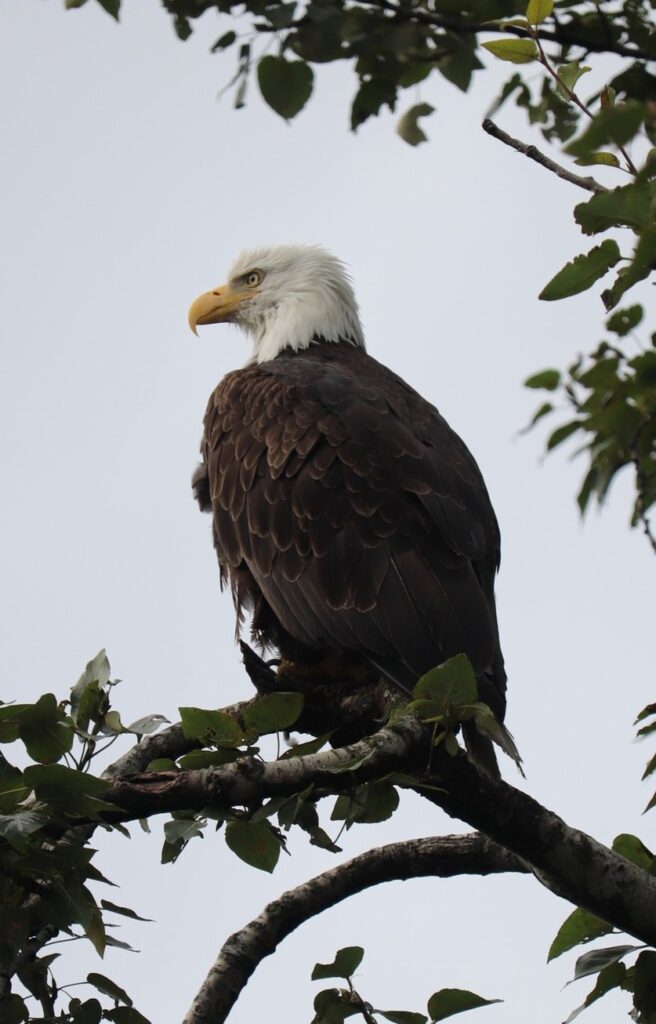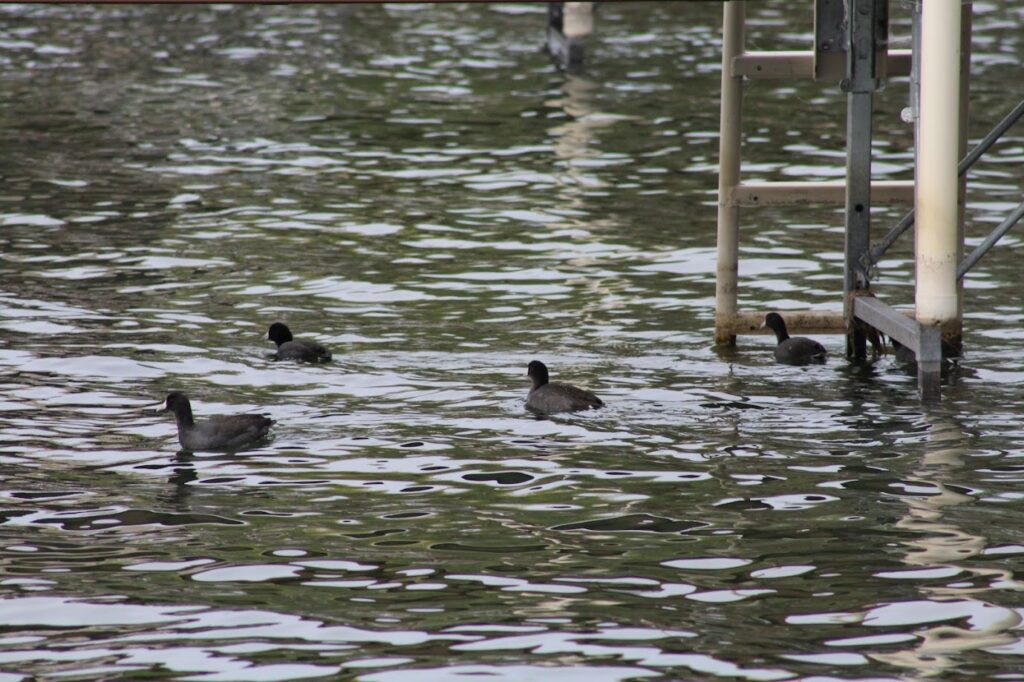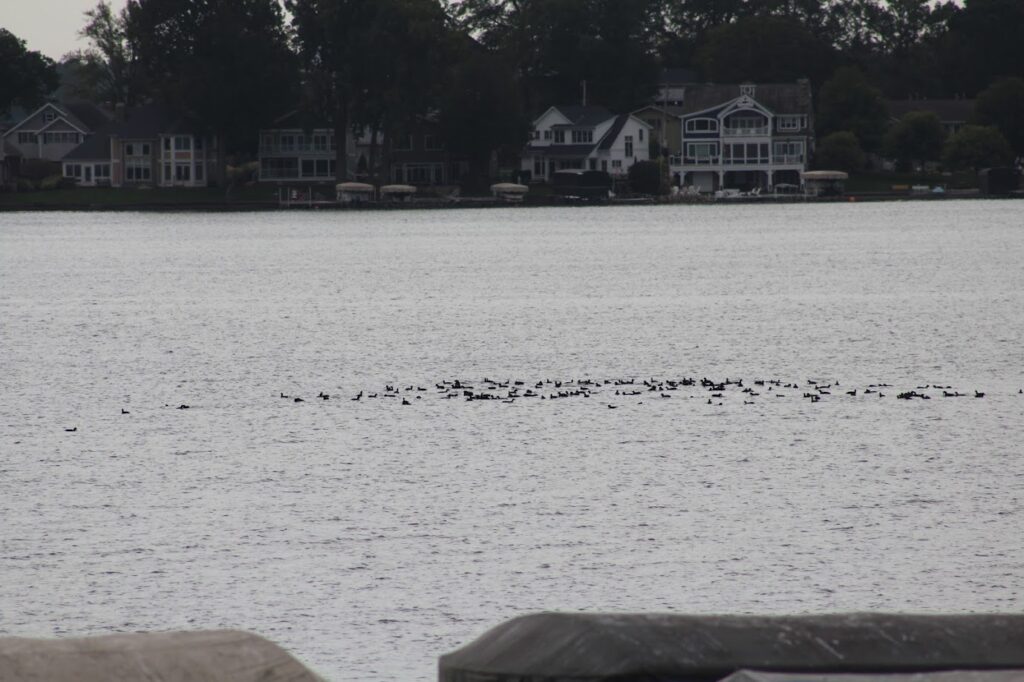Don’t worry, this is a G-rated post!
Question: What do lake “weeds” have to do with our national bird?

No, I don’t have a punchline for that question, I have a serious answer! That is, if you can call Coots serious…

A flock of several hundred American Coots have been loafing around Lake Maxinkuckee the last couple weeks, in and around the public piers on the north side of the lake. As of this morning, they are still around.

This species – with a total population of some seven million – breeds most abundantly in the Upper Great Plains and Canada. It is a common migrant through our area as they head for wintering grounds in the American south, Central America, and the Caribbean.
The Coots are feeding on the aquatic plants found in abundance in Lake Maxinkuckee, such as algae, duckweed, eelgrass, sedges, and water milfoil. (Long-time readers of this blog know about the importance of aquatic plants, the base of the food chain that we’ve written about here ). Coots are able divers, but they are clumsy in flight and require a long runway of water to get aloft. I have seen several videos of them being targeted by Bald Eagles on other lakes, which I suspect must find them fairly easy pickings. You can even watch one gobble down a Coot foot, if you’re in to that sort of thing.
Coots are magical… they help turn simple “weeds” into eagles!
For the great majority of them that manage to evade the talons, they make for a welcome reminder of our local lake’s connection to the broader ecosystem and the web of life that sustains us.

Hi, I’m Adam Thada, President of the Lake Maxinkuckee Environmental Fund in Culver, IN. I studied Biology (BS) at Indiana Wesleyan University and Environmental Science (MSci) at Taylor University. The last decade or so has found me in Northern Indiana, working in sustainability, environmental education, and ecological restoration.

Recent Comments